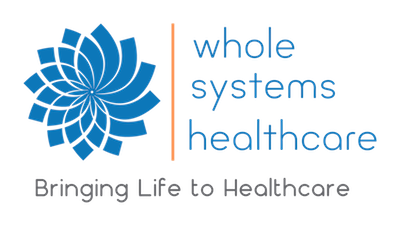Ovulation is a critical aspect of a woman’s menstrual cycle, marking the time when an egg is released from the ovary. It’s a vital process for those trying to conceive and for those who are tracking their menstrual health. Recognizing the signs of ovulation can empower women to better understand their bodies. This comprehensive guide will delve into the various signs of ovulation and explore both traditional and technological methods to monitor this process.
Physical Signs of Ovulation
Ovulation typically occurs around the middle of the cycle, but the exact timing can vary from person to person. For most women with a regular menstrual cycle of 28 days, ovulation often happens around day 14. However, it’s important to note that menstrual cycles can range from 21 to 35 days in adults and from 21 to 45 days in young teens, affecting when ovulation occurs.
If your cycle is longer or shorter than the average 28 days, a good rule of thumb is that ovulation usually occurs about 12 to 16 days before your next period starts. So, if you have a 30-day cycle, ovulation may occur around day 14 to 18. This window is considered the most fertile period of the cycle.
It’s crucial to understand that menstrual cycles can vary from month to month, and factors like stress, diet, exercise, and health conditions can influence the timing of ovulation. Therefore, tracking physical signs of ovulation can be a more reliable indicator for many women than simply counting days on the calendar.
Several physical signs can indicate that ovulation is happening:
- Change in Cervical Mucus: Around ovulation, cervical mucus becomes clear and stretchy, resembling egg whites. This change facilitates the movement of sperm through the cervix.
- Increased Basal Body Temperature (BBT): Post-ovulation, there’s a slight rise in BBT, typically by 0.5 to 1 degree Fahrenheit. Tracking BBT over a few months can help you predict ovulation.
- Mittelschmerz: Some women experience a mild ache or twinge of pain on one side of the abdomen, known as mittelschmerz, around ovulation.
- Breast Tenderness and Abdominal Bloating: Hormonal changes during ovulation can cause breasts to feel tender and lead to abdominal bloating.
- Heightened Senses: Many women report heightened senses, such as a more acute sense of smell, during ovulation.
Behavioral Signs
Behavioral changes around the time of ovulation are not just anecdotal but are grounded in physiological changes driven by hormonal fluctuations. The most notable behavioral change observed in many women during ovulation is an increase in libido or sexual desire. This uptick in libido is a natural part of the body’s way of signaling the fertile window, the time when conception is most likely to occur.
During ovulation, there is a surge in estrogen levels, which peaks just before the release of the egg. This surge not only prepares the body for potential conception but also has a notable impact on sexual desire. Estrogen is closely linked with increased sexual interest and arousal. It also plays a role in increasing vaginal lubrication, making sexual activity more comfortable and enjoyable, which can further enhance libido.
Additionally, ovulation is often accompanied by a rise in testosterone levels, albeit to a lesser extent compared to estrogen. Testosterone, though typically associated with male sexuality, plays a significant role in female sexual health and desire. Its subtle increase during ovulation contributes to heightened sexual interest and can intensify physical sensations.
Moreover, this period of heightened fertility may also bring about subtle changes in appearance and behavior that are unconsciously perceived as more attractive by others. Research has suggested that some women may experience an increase in confidence, a more positive self-image, and a greater sense of wellbeing during this phase of their cycle, all of which can contribute to an increased interest in sexual activity.
It’s important to recognize that these changes can vary greatly among individuals. Some women may experience a pronounced increase in libido, while others may not notice any significant change. Factors like stress, lifestyle, and overall health can also influence these behavioral changes.
Understanding and Tracking Ovulation
Understanding and tracking ovulation is a cornerstone of reproductive health and family planning. While the signs of ovulation can be subtle, there are effective techniques and technological aids that can help demystify this process. These tools range from traditional methods like the Fertility Awareness Method (FAM) to modern digital solutions. Each method offers a unique way to track and predict ovulation, catering to individual preferences and needs. Whether you prefer a hands-on approach or the convenience of technology, these methods provide valuable insights into your fertility cycle, enhancing your ability to make informed decisions about your reproductive health. Let’s explore these options in detail, starting with the Fertility Awareness Method and progressing to innovative technological solutions like Inito.
Fertility Awareness Method (FAM)
The Fertility Awareness Method involves observing and recording several fertility signals to determine the fertile window. Key components of FAM include:
- Cervical Mucus Tracking: As mentioned, cervical mucus changes consistency around ovulation.
- BBT Charting: Recording your basal body temperature daily can help identify the slight temperature rise post-ovulation.
- Calendar Tracking: Monitoring the length of your menstrual cycle over several months can help predict ovulation. Typically, ovulation occurs about 14 days before your next period.
Technological Aids for Tracking Ovulation
Advancements in technology have made tracking ovulation more accessible and accurate:
- Digital Ovulation Predictor Kits: These kits measure the surge in luteinizing hormone (LH) in your urine, which occurs 24-36 hours before ovulation.
- Fertility Monitors: Devices like Inito go a step further by measuring estrogen, progesterone metabolite, FSH and LH levels in urine, offering a broader fertility window.
- Smartphone Apps: Numerous apps are available to help track menstrual cycles and predict ovulation using the data you input, such as BBT, cervical mucus consistency, and period dates.
Importance of Understanding Your Body
The journey of understanding your body, especially in relation to ovulation, is profoundly empowering. This deepened awareness transcends mere knowledge of physical signs; it fosters a connection with the rhythms and cycles of your own body, leading to a sense of harmony and attunement that can have far-reaching impacts on overall health and well-being.
For those trying to conceive, comprehending the nuances of ovulation is invaluable. It’s akin to having a roadmap to your most fertile times, enhancing the chances of pregnancy significantly. This knowledge allows for precise timing of intercourse, optimizing the opportunity for sperm to meet egg. But the benefits of understanding ovulation extend beyond conception.
Even for those not trying to conceive, recognizing the signs of ovulation and understanding one’s menstrual cycle are crucial. This awareness can serve as a natural barometer of health. Irregularities in the cycle or changes in ovulation patterns can signal underlying health issues, prompting early intervention. Moreover, tracking ovulation can help manage or anticipate menstrual symptoms, aiding in better preparation and personal care.
This attunement to one’s body extends beyond the physical realm. It encompasses an understanding of the emotional and psychological changes that accompany different phases of the menstrual cycle. Such awareness can lead to greater self-compassion, better stress management, and improved mental health, as you learn to sync your lifestyle with your body’s natural rhythms.
When to Seek Medical Advice
If you’re trying to conceive and have been tracking ovulation without success for a year (or six months if you’re over 35), it’s advisable to consult a healthcare provider. Additionally, irregular periods or an absence of ovulation signs might warrant a medical consultation.
Conclusion
Recognizing the signs of ovulation is a step towards understanding your reproductive health. Whether you choose traditional methods like the Fertility Awareness Method or modern technologies like Inito, being informed about your body’s cues is empowering. This knowledge not only aids in family planning but also contributes to a broader understanding of your overall health and well-being.
For personalized guidance and support, consider working with our holistic fertility doctors at Whole Systems Healthcare Boulder. Our team of experts can provide tailored advice and holistic solutions to enhance your fertility journey, ensuring a compassionate and comprehensive approach to your reproductive health.



